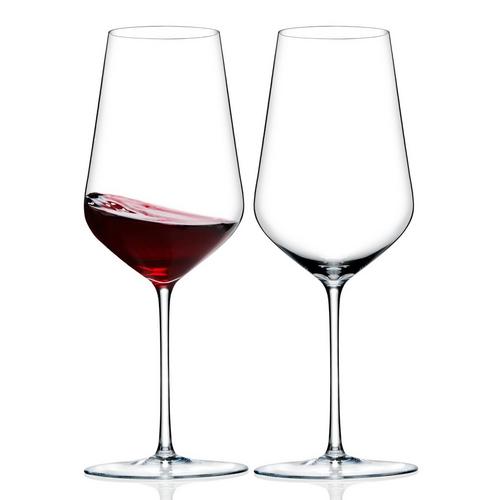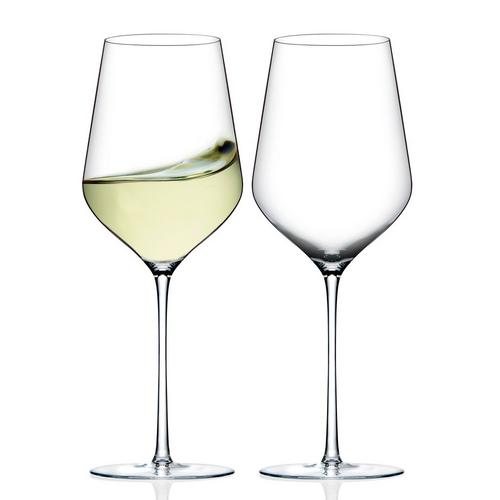Wine is a global business, and grapes have traveled internationally for thousands of years. As different varieties are adopted in new regions, they’re often been given new names— consider how France’s Syrah became Shiraz, or Primitivo became known as Zinfandel.
Here are five popular grapes that have different names depending on where they are grown.
Syrah/Shiraz
Syrah is a French variety that’s perhaps most famous for being the principle grape of the Northern Rhône. But when it was exported to Australia, this red grape became known as Shiraz.
No one knows for certain why the name was changed. But it helped brand Australian offerings as a noteworthy and unique style. In fact, regions like California have adopted the name Shiraz to sometimes indicate their bottles are like the the fruitier Australian style rather than the rustic French Syrahs.
Domaine des Remizières 2019 Crozes-Hermitage; $23, 91 points. Whispers of eucalyptus and charred clove lend spice to black currant and cherry flavors in this 100% Syrah sourced from vines averaging 45 years in age. Matured 15 months in a combination of new and used oak, it’s full bodied and deeply concentrated but maintains freshness and vitality. Delicious now the wine should hold well through 2029. French Libation. —Anna Lee C. Iijima
One Leaf 2018 Shiraz (California); $10, 90 points. This robust and mouthcoating wine offers generous black fruits, hints of white and black pepper and a firm but rich texture. It flirts with a gamy, earthy character for added complexity that’s rare in a wine this affordable. Best Buy. —Jim Gordon
Powell & Son 2017 Shiraz (Barossa Valley); $31, 90 points. This is a rich, old school Barossa Shiraz. Plump fruit in the form of currents and blueberries are backed by notes of olive brine, earthy spice, charred veg and a furniture polish-and-vanilla-oak character. The palate is dense but not overtly syrupy or muscular. There’s quite a bit of high gloss oak showing here but plenty of fruit and spice, too. This is well-groomed but wouldn’t it be nice if a few freckles showed through all the makeup? Powell & Son. —Christina Pickard
Primitivo/Zinfandel
Puglia’s hot growing seasons are perfect for producing powerful and well-structured Primitivo. But in California, this grape is known as Zinfandel, where it produces soft and voluptuous wines.
Though these may be the most popular regions for this grape, it originated in Croatia where it’s called Tribidrag.
Tribidrag, or Primitivo, was first mentioned in Italy in 1799. And the grape may have arrived in the U.S. as early as the 1820s. Like with the Syrah/Shiraz divide these two names can also be used as an indication of style in international markets.
V. Sattui 2018 Pilgrim Vineyard Old Vine Zinfandel (Lodi); $39, 93 points. Deep and brooding, this quietly powerful wine is drenched in black-fruit flavors and accented by hints of clove, vanilla and cinnamon for a great sense of complexity along with rich and satisfying fruitiness. Full bodied yet rather soft in tannins, it has a supple mouthfeel. Editors’ Choice. —J.G.
Allan Hancock 2019 Zinfandel (Paso Robles); $15, 92 points. Light in the glass, this is a fresh and zesty style of Zinfandel, showing strawberry, fennel and light garden herbs on the nose. The lovely palate is also fresh with tart red-plum and raspberry flavors, filled in by baking spices and dried herbs. The higher alcohol is not apparent at all. Best Buy. —Matt Kettmann
Botromagno 2018 Primitivo (Puglia); $19, 90 points. A mix of tilled earth, violet, blackberry, plum and dried hibiscus carry this enticing Primitivo. The medium-bodied palate is driven by juicy dark fruit, with savory tones of earth, flowers and spice adding depth. The tannins show some grit, but it’s nothing a hearty protein can’t temper. LLS–Winebow. Editors’ Choice. —Alexander Peartree
Pinot Noir/Spätburgunder
Pinot Noir is the most common name for this grape that hails from France. The origins of this grape are uncertain but its mentioned as far back as 1283 under yet another name, Moreillon.
Pinot Noir is responsible for the iconic wines of Burgundy and has spread under the same name to produce world class wines in regions like California and Oregon. And it’s the signature red grape of New Zealand.
In German, the grape is called Spätburgunder, which translates to late Burgundian referring to the variety’s origins and growing season. Germany is one of the worlds top producers of the grape and the wines have excelled in quality.
Wittmann 2018 Rotwein Trocken Spätburgunder (Rheinhessen); $30, 93 points. The nose is quiet here suggesting trace hints of toast and smoky mineral, but the palate of this spry, fresh-footed Pinot Noir offers bold strokes of zippy black cherry and raspberry. Freshly concentrated and edged by fine-grained, silky tannins, it’s a wine that’s ready now but should drink beautifully through at least 2028. Loosen Bros. USA. —A.I.
Élevée Winegrowers 2018 Björnson Vineyard Pinot Noir (Eola-Amity Hills); $52, 92 points. Ripe strawberry fruit touches on jam, along with lighter flavors of Bing cherry. It’s an open, delicately herbal wine, with a peppery pop to the finish. One-third of the barrels were new. —Paul Gregutt
Domaine Dominique Guyon 2017 Les Dames de Vergy (Bourgogne Hautes Côtes de Nuits); $35, 91 points. Packed with swathes of red fruits, this generous, fruity wine is approaching maturity. Succulent acidity goes well with the light structure and refreshing fruitiness. Drink now. Taub Family Selections. —Roger Voss
Mourvèdre/Monastrell/Mataro
This Spanish variety has many names within the country itself but the most common is Monastrell. The grape is said to have traveled to France’s Provence region in the 16th century from Morvedre, now Sagunto, giving the name Mourvèdre.
Similarly the variety traveled to France’s Roussillon region from Mataró. Mataró is now the most common name used in Australia and California.
Skinner 2018 Mourvèdre (El Dorado); $30, 92 points. Opulent plum, blueberry and black-cherry flavors give this full-bodied and moderately tannic wine lots to like, while moderate tannins add balance and grip. It’s an outstanding example of an under appreciated varietal. Editors’ Choice. —J.G.
Bodegas Luzón 2017 Luzón Colección Monastrell (Jumilla); $11, 90 points. Plum and berry tones are pure and fruity on the nose. The mix of dark fruit and spice notes makes for a solid flavor profile, while this Monastrell offers hints of burnt toast, black licorice and spice on a slightly warming finish. Aviva Vino. Best Buy. —Michael Schachner
John Duval Wines 2017 Annexus Mataro (Barossa Valley); $60, 90 points. This small batch Mourvèdre from renowned Barossa winemaker John Duval is more austere than the previous vintage. It requires plenty of swirling in glass before unveiling its true characters, namely cherry, red currant, licorice, spice and stony earthy undertones. Duval’s winemaking signature is all over the palate. A powerful grip of textured tannins support red fruit, spice and earth. Drink this now with protein and until 2029. Old Bridge Cellars —C.P.
Pinot Gris/Pinot Grigio
Pinot Gris is mutation of Pinot Noir, which resulted in berries that are darker skinned than most white grapes and can turn pink or even purple as they ripen.
The name has been attributed to several varieties going back to the Middle Ages. But modern Pinot Gris was introduced to Italy in the early 19th century and adopted the Italian translation of Pinot Grigio. The grape has since exploded across the globe producing wines that range from simple to complex. And Pinot Grigio has even become a favorite among skin-contact white wine producers around the world.
Bedell 2019 Pinot Gris (North Fork of Long Island); $25, 90 points. From young vines planted in 2016, this wine is a triumph. Bright, zesty aromas of yellow apple, Meyer lemon and honeysuckle are concentrated and lifted on the nose. There’s a gentle roundness to the light-bodied palate, with juicy, plush apple and lemon flavors that don’t falter from start to finish. A bit of pithy waxiness lends some grip to an otherwise delightfully fruity wine. —A.P.
Kettmeir 2019 Pinot Grigio (Alto Adige); $20, 90 points. Tangy and delicious, this vibrant white opens with delicate scents of spring blossoms and white stone fruit. On the crisp palate, fresh acidity accompanies green apple, white peach and fennel. Santa Margherita USA. Editors’ Choice. —Kerin O’Keefe
Bieler Family 2019 Daisy Pinot Grigio (Columbia Valley): $12, 88 points. The aromas are light but bring some complexity, with notes of apple, pear and the underside of pineapple. Mouthwatering citrus and pear flavors follow. Dried flower notes linger on the finish. Best Buy. —Sean P. Sullivan
The Link LonkJune 23, 2021 at 06:20PM
https://ift.tt/3vSo3Ux
Five Popular Grapes With Different Names Around the World | Wine Enthusiast - Wine Enthusiast Magazine Online
https://ift.tt/3eO3jWb
Grape





No comments:
Post a Comment